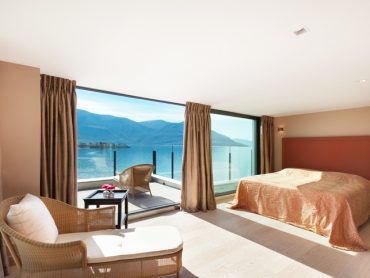Cinemagraphs: The Future of Food Menus
With the Consumer Electronics Show (CES) currently underway in Las Vegas, it’s time for a tech talk. I’m sure we’ll have a lot to discuss once the convention wraps, but in the meantime I’d like to formally introduce a topic and word that has been on my mind for quite some time (and indeed if you’ve gotten me over the phone anytime recently then you’ve likely heard me blab about this!).
For our purposes as hoteliers, cinemagraphs are essentially a form of animated GIF with a short, repetitive action to give the appearance of continuous movement. With smartphone cameras getting better and better with each year’s iteration in addition to improved animated GIF software features, cinemagraphs are no longer exclusive to the professionals. On the other end of the spectrum, tablets are becoming cheaper and more widespread, and both desktop and mobile browsers are now far more accommodating to such embedded moving pictures. In short, technological advancements will soon enable cinemagraphs to replace all digital photography.
All after, with a picture worth a thousand words, a video is worth a thousand pictures. Cinemagraphs and videos are thus a marketer’s best friend, and you’d be wise to understand their applications before the competition does (and before they lose their early adopter luster). So, how can you use cinemagraphs to sell your property and its amenities?
The most pronounced application is for your website and the digital photography housed therein. For each landing page where pictures are prominently featured – either as embedded features within a text-centric element or as part of a slider – still images can be replaced by cinemagraphs to add some texture to the page. Whether the topic of the page is the hotel lobby, F&B, spa or area attractions, working in a slight movement will captivate the eyes and subtly hint at the mystique of your property.
Nowhere is this more apparent than for a restaurant menu. In the short-term, you can spice up an F&B page with cinemagraphs of a cup of coffee accented by billowing vapor, a thick steak with jus bubbling from its edges against a white plate or a slice of cheesecake with molten chocolate snaking along a rivulet towards the apex. These are three examples of well-focused still shots with a repetitive motion to give the sense of freshness and thereby increase the perceived value of each dish. Next, consider the long-term and how the widening prevalence of tablets will soon enable many eateries to forgo paper altogether. Imagine building an app for your restaurant’s menu where every item was accompanied by a cinemagraph.
The notion of heightened perceived value through video applies in less direct ways to every other aspect of your operations. Think lobby waterfalls, flowers in a vase wavering from a slight breeze, cyclical ripples in a picture of the hotel pool, blades of grass vacillating against a stunning mountain vista from the tee-off on the golf course or steam dancing upwards against the backdrop of wooden sidewalls of a sauna room.
You simply have to find the recurring movement in everyday objects, and then capture it with a suitable camera. So, next time you are due for a photography update, ask about cinemagraphs and what you might do to keep up with this budding trend.
(Article by Larry Mogelonsky, published in Hotels Magazine on January 8, 2016.)




